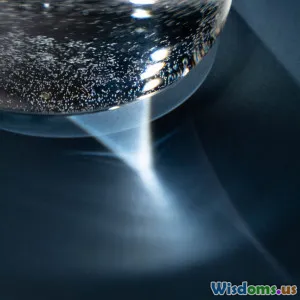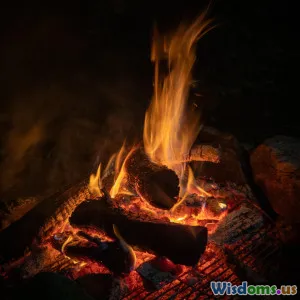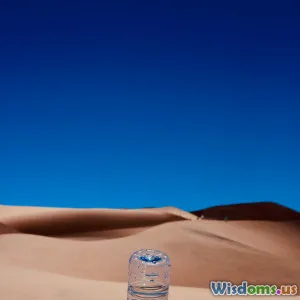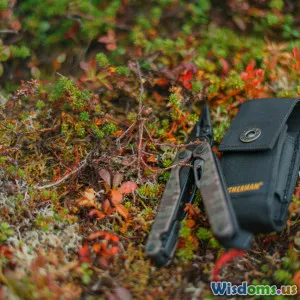
Do Solar Stills Really Work for Survival Hydration
9 min read Explore the effectiveness of solar stills in survival hydration, examining their science, practicality, and real-world usability for securing drinking water. (0 Reviews)
Do Solar Stills Really Work for Survival Hydration?
Water is the essence of survival, especially in austere environments. When stranded without access to clean water, every survivalist dreams of a reliable, natural method to procure hydration. Enter solar stills—ingenious, low-tech devices that use sunlight to purify contaminated, salty, or even undrinkable water. But how effective are they really? Can solar stills genuinely sustain you on the trails, or are they just survival myths layered with hopeful optimism? This article unfurls the science, real-world applications, and practical considerations to answer the pressing question: Do solar stills really work for survival hydration?
Understanding Solar Stills: The Science Behind the Device
What is a Solar Still?
A solar still is essentially a simple distillation apparatus that mimics nature's water cycle—evaporation and condensation. It typically consists of a transparent cover (like a plastic sheet or glass) laid over a pit or container filled with saline, dirty, or undrinkable water. The sun heats the water, causing it to evaporate as pure water vapor, leaving impurities behind. The vapor condenses on the cooler inner surface of the cover and drips into a clean collection area for drinking.
How Does Distillation Purify Water?
Distillation removes dissolved solids, pathogens, and chemicals by turning water into vapor and then back into liquid. This process excludes almost all contaminants, including salts and many microbes that can cause illness.
Scientific principle: Volatile impurities with significantly higher boiling points than water are left behind, rendering the collected water relatively pure and safe.
Types of Solar Stills
- Conventional ground solar stills: Dug into soil with water or moist plants inside.
- Portable solar still kits: Come with pre-made components designed for backpackers.
- Vegetative stills: Utilize green vegetation to add moisture inside the setup.
Each type varies slightly in setup complexity, yield, and portability.
Effectiveness of Solar Stills in Survival Situations
Water Output: What Can You Expect?
One critical question is, "How much potable water can a solar still realistically produce in the wild?" Experimental data provides some clarity:
- According to the US Army Survival Manual (FM 21-76), a typical ground solar still yields approximately 0.5 to 1 liter of water per day under optimal sunlight.
- Research by the University of Texas found small portable stills produce roughly 0.5 liters daily in strong sunlight.
- The yield depends heavily on factors such as sunlight intensity, still size, ambient temperature, and humidity.
In practical terms, 1 liter per day meets only part of the human hydration needs. The average adult requires about 2-3 liters daily just for basic functions.
Real-World Field Tests
Field survival experts like Cody Lundin and Ray Mears have demonstrated working solar stills, verifying their function but also acknowledging their low throughput. Videos from survival channels show slows but steady water gathering—enough to postpone dehydration in emergencies, but insufficient as a sole hydration source long-term.
Influencing Factors
- Sunlight availability: Cloudy conditions reduce evaporation.
- Setup skill: Leakage, poor sealing, or suboptimal angles reduce yield.
- Water source: Saltwater, brackish streams, or even perspiration can be distilled.
Practical Limitations and Challenges
Setup Complexity
Building a solar still requires more than just digging a hole and covering it. For effectiveness one must:
- Find a location with direct, ample sunlight.
- Ensure an airtight seal between ground and plastic sheet.
- Angle the cover to facilitate condensation collection.
- Avoid soil contamination or debris in the collecting area.
In stressful survival situations, this complexity can hinder implementation.
Time Investment
Solar stills produce water slowly. If critically dehydrated, survivors cannot afford to wait hours or days for sufficient hydration.
Environmental Constraints
- In heavily shaded, rainy, or cold climates, solar stills barely produce water.
- Deserts with intense sunlight and heat yield better results, but water sources (e.g., moist soil, plant material) may be scarce.
Alternative Methods Comparison
Compared to other water procurement methods like boiling found water, using filtration systems, harvesting dew, or collecting rainwater, solar stills have mixed efficiency and sustainability profiles.
Enhancing Solar Still Efficiency: Tips and Innovations
Using Vegetation Inside the Still
Adding fresh green leaves or plants to the pit increases moisture content inside the still, raising water yield. Plants transpire water vapor, supplementing the base water body.
Improving the Design
- Using slanted metal pans to increase evaporation surface.
- Insulating the still base to trap heat.
- Using dark materials inside the pit to increase solar absorption.
Pre-Filtering Inputs
Avoid grit or debris inside the collection basin to reduce contamination.
Hybrid Approaches
Incorporating elements such as moisture-trapping materials or combining stills with dew collection nets can maximize water gain.
Expert Opinions and Historical Use
The U.S. military includes solar still construction in survival training manuals, indicating official recognition of their value. Yet, survival experts like Les Stroud (Survivorman) recommend solar stills mainly as last-resort tools due to their slow output.
In historical desert explorations, solar distillation was occasionally used but never as the primary water source. Indigenous populations often designed other water collection techniques tailored to local ecosystems.
Can You Rely on Solar Stills for Survival Hydration?
Summary of Benefits
- Produces clean, safe drinking water.
- Uses no fuel or complex tools.
- Works with brackish, salty, or contaminated sources.
Summary of Drawbacks
- Low yield rarely meets 100% hydration needs.
- Setup demands time, sunlight, and skill.
- Challenging in less sunny, humid, or cold environments.
Practical Advice
Solar stills should be viewed as a supplementary hydration method—valuable for extracting additional water from minimalist materials. Ideally, combine them with other survival hydration strategies like finding fresh water sources, carrying purification tablets, or using portable filters.
Final Thoughts
In emergency and survival scenarios, any potable water counts. Solar stills are scientifically sound and reliable for purifying water, but their low production rates mean they cannot be fully depended upon. Preparedness plans should include understanding solar still construction while also cultivating multiple hydration skills and solutions.
Resources and Further Reading
- U.S. Army Field Manual 21-76 "Survival"
- "Emergency Water Sources and Solar Stills" by NCCER
- "Survivorman" Seasons—Outback solar still episodes
- "How to Build a Solar Still" – National Geographic Hands-On Guide
By assessing their strengths and limitations candidly, you can gauge whether to include solar stills as an effective survival hydration tool in your kit—empowered by knowledge and reality.
Rate the Post
User Reviews
Other posts in Water Procurement & Filtration
Popular Posts
















